Banner photo is of fortune tellers at a garden party at Sir William Mackenzie’s on Avenue Road, circa 1912. From the Toronto City Archives.
In my time, I’ve known a couple of people who are big believers in palm reading – or at least, they enjoy having their palms read. Myself, I’ve never been a fan. First off, I think it’s a lot of bunk and, second, I’m terrified they’ll tell me I’m about to die. So it’s really not something I’ve ever had done willingly. But I will say, on the two occasions I was dragged to one (like a protester gone limp) it was a fascinating experience. Not so much for the reading as for the readers themselves and the attendant atmosphere.
The first time was in a little walk-up above a diner on Yonge St. The space was quite old, likely unchanged much from its original Victorian-era design, with a series of tight, airless rooms. The woman who read my palm – and tea leaves, what a bargain! – was a real pip and a double for the Lady Chablis in the movie Midnight in the Garden of Good and Evil. The second time was in the heavily chintz-ed and carpeted apartment of a tidy, kindly middle aged lady who was more like your friend’s aunt than someone taking money to hold your hand. One couldn’t have been less like the other, yet both shared an atmosphere of secrecy and quiet. Not quite like something shameful, more like something forbidden. Which, legally speaking, it is.
According to the Criminal Code of Canada, Section 365 (as in, it’s illegal 365 days a year) Pretending to practice witchcraft etc. is defined as :
“Every one who fraudulently
(a) pretends to exercise or to use any kind of witchcraft, sorcery, enchantment or conjuration,
(b) undertakes, for a consideration, to tell fortunes, or
(c) pretends from his skill in or knowledge of an occult or crafty science to discover where or in what manner anything that is supposed to have been stolen or lost may be found,
is guilty of an offence punishable on summary conviction.”
You’ll notice that they say “pretends” – apparently it’s no crime if you can actually tell fortunes and are an honest to god ‘crafty scientist.’
Anyhow, as it is now, so it has always been in Toronto – with cops, throughout the past century and a bit, regularly giving these fortune tellers chase. Really, the only difference is that in Toronto of old the police were provided with some special back-up in the form of an outfit called the Morality Department.
The Morality Department was a gift to the city from its newly elected mayor, William Howland. Howland had been a successful businessman – which seems to be a prerequisite – and had once been president of the Board of Trade, but his heart was in his church and charitable work.
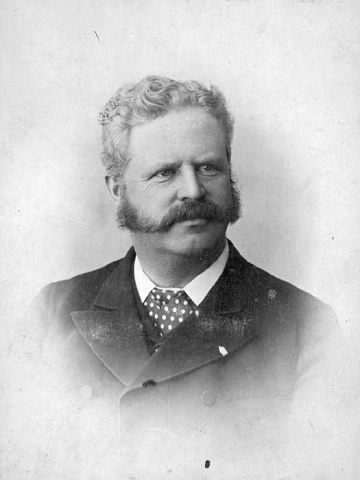
It’s from Howland’s mayoral campaign that the city got its “Toronto the Good” slogan and, despite the fact it’s mostly been uttered with sarcasm, he really did his best to make it so. His aim was to rid the city of drunkenness, the deplorable conditions in its slums, the filth on its streets and in the water, and basically any morally corrupting behaviour a body could get up to. Which, of course, included anyone taking money in return for squinting at a hand and making vague predictions. Of which there were many.
How many? Well, that’s a tricky question given the inherent, er, trickiness of the trade. Even before Howland the Reformer came along, it’s not exactly like they were standing up to be counted. Well, okay, some were – or rather, one was:

Mrs. Allen never reappeared in the directories, but another of her ilk popped up in 1866. However, his was a different spin on the “crafty science”:

A “clairvoyant physician”? You may well wonder what this schtick entailed. Well, I am happy to be able to tell you, thanks to the recollections of a Rev. W. S. Blackstock in the Canadian Magazine of Politics, Science, Art and Literature.
According to Blackstock, he himself accompanied an invalid minister on a visit to the clairvoyant MD and this is what followed:
“The invalid – the late Rev. T. W. Jeffrey – and I were in the room when the doctor came in. He had never met the patient before; and when introduced to him, he simply said, “You will not need to say anything but to ask me to examine you.” He then, with a slight convulsion and two or three coughs, as if he were in a state of partial suffocation or strangulation, went into the hypnotic trance and examined the patient. Of course, I do not know whether the diagnosis was correct or not. I only know that he left the impression on the mind of the sick man that he knew all about his case. He then proceeded to prescribe, and the Rev. Mr. Jeffrey wrote down the prescription. But the incident which specially interested me was the fact that when he came out of the trance, he went over to the table where Mr. Jeffrey was writing, picked up the paper and carefully read it over, and then said in an undertone to Mr. Jeffrey, ‘I should think it is’ – mentioning the disease – ‘that you are suffering from.’ He evidently did not know anything about that which had been passing through his mind in the abnormal state out of which he had just come, but he was trying to gather, by inference from the remedies which he had prescribed, the nature of the disease which they were intended to cure.”
Well, I don’t know about you but I can’t find a hole in that – that’s water tight, that is.
W. S. Clark continued to practice this magical medicine through the 1860s and early 1870s – like a lone, all-seeing wolf – with no one (at least officially) to share the field with. But then, in 1874, a new breed of spiritual diagnostician burst onto the Toronto scene: phrenologists.
Phrenology, if you’re not familiar, is the “science” of reading a person’s character and ability (and thus their fortune, I guess) by examining their skull. Or, as Ambrose Bierce succinctly put it,“The science of picking the pocket through the scalp.”
At the time, unlike fortune telling and (I would hope) clairvoyant medicine, phrenology was treated with a bit more gravitas. I mean, at least, dignified men wrote serious books about it – like the Fowler brothers, Orson and Lorenzo, and the wonderfully named Dr. Gall. But still, Toronto cops and their pals in the Morality Department weren’t taking any chances:
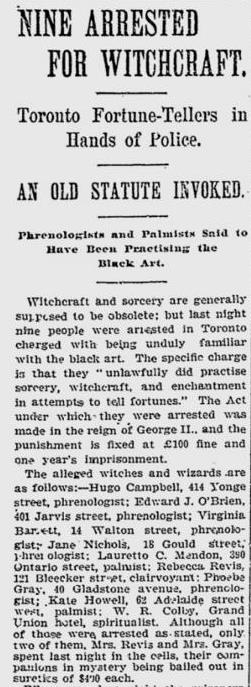
I especially love this quote from one of the witches (or wizards) arrested that night:

Despite the fierce crackdown on fortune tellers of all description, there was a certain leniency afforded them so long as they performed on a stage before a large, paying audience.
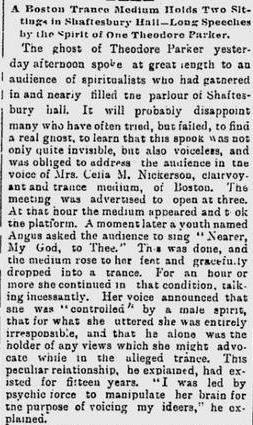
Hilariously, the Toronto Daily Mail reporter wasn’t having any of it.
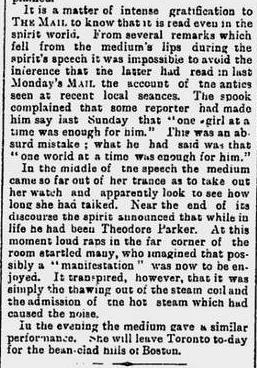
More curious than welcoming a visiting clairvoyant, was the city’s tolerance for – and the success of – a local phrenologist named Francis Cavanagh.
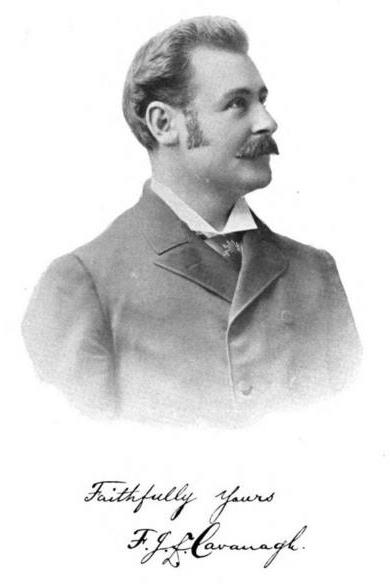
Unlike other phrenologists in the city who were toiling away rubbing scalps, Cavanagh actually advertised his services. And in a big way – with full page ads in the city directory.
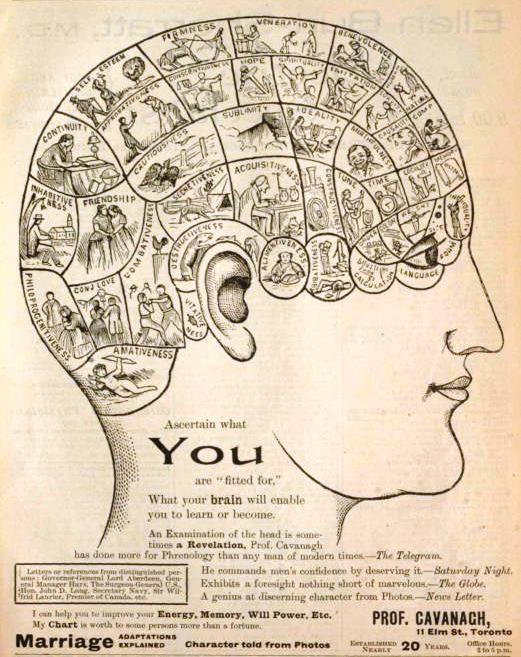
Rather than bringing heat on himself from the cops and Morality Department, he actually seemed to gain respect and distinction. It could be that the addition of “Prof.” to his name gave him a certain “don’t take me for a sideshow carny” credibility. Or, more likely, it was that he’d published a very scientific (sounding) book on the topic: Professor Cavanagh’s Phrenological Chart.
Well, as someone who has read (some of) the book, I am pleased to tell you that it is a doozy. I mean, it is a positive gold mine of information on what a cranium can tell you. So, if I may, I’d like to share some of the more illuminating passages:
“Everyone troubled with headaches, neuralgia, epilepsy, fainting, or weak spells, heart trouble, apoplexy, rupture, catarrh or throat trouble, should keep their hair of reasonable length. Don’t allow anyone to turn you from this natual, safe and most valuable knowledge which has taken me many years to discover the importance of before putting it in print. [ know that there are exceptions to every rule, but if we were to allow such to discourage us, we would often be in ignorance of valuable truths. Don’t allow what you hear about some eastern people shaving their heads, or arguments re bald heads, etc., to nullify my suggestion. Many who have continually kept their hair shingled have had some bad luck, or caused some trouble, explosion, or accident later on. (This assertion will be found in many cases sadly true).”
On the other hand, extra hair is not always a good thing…
“Two French doctors have been looking into the question of bearded women, and have discovered that out of every 1,000 sane females 290 are bearded. Of these 230 have only a light down, forty have a very visible beard, and ten are unmistakably adorned with this hirsute appendage. Out of 1,000 insane women examined, 491 had slight beards, while fifty-six had beards well grown.”
But far and away, my favourite kernel of Cavanagh wisdom is on the topic of “Vivativeness” (that’s self-preservation to you and me.) According to Cavanagh’s chart, if you are low scoring in this area, then you should heed this advice:
“You have little power to resist disease and cannot expect to live long, should straighten up your affairs and make your Will. Don’t forget that a few thousand dollars, if you possess such, bequeathed to Prof. F. J. Cavanagh, Phrenologist, of Toronto, will do more good to humanity than in any other way you could think of. Remember the Henderson bequest and how much good was done through it. You should often think of this, and make up your mind to do likewise. Do it now.”
No, honest – I did not make that up.
With such genius for divining a cranium’s character, Francis Cavanagh gained many notable clients and even found a bit of fame for offering advice to someone who hadn’t been looking for it:
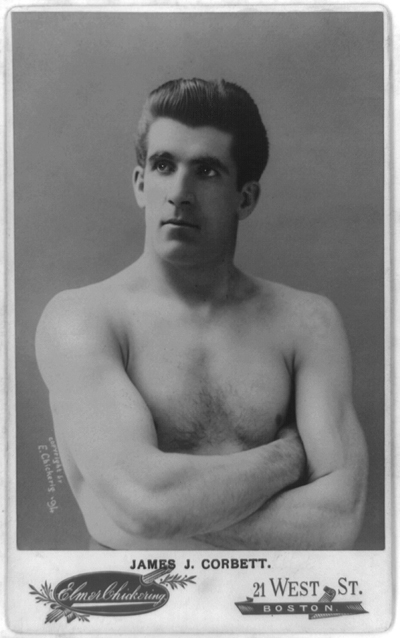
Our Prof. Cavanagh sent the famous boxer and former World Heavyweight Champion “Gentleman Jim” Corbett a telegram with some wise words, and the Daily Mail and Empire gleefully reprinted it.
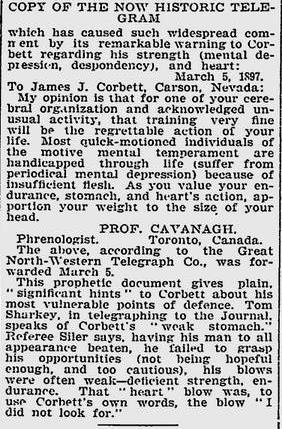
Francis Cavanagh enjoyed quite a good, and certainly lengthy, career in reading heads. After roughly 30 years spent on Elm St. he eventually moved to Bloor W., near Bay, during the First World War and continued on until his death, sometime around 1931.
He was pretty fortunate to have had the career he did, considering that phrenology was in its death throes when he came to it. I doubt that many others in the fortune telling business could claim such success. But then, if they were really worth their salt, they’d probably already foreseen that.
Really enjoyed this! I always look forward to your posts. Best, Susan
LikeLiked by 1 person
I’m so glad you liked it! I always look forward to your posts too – I really enjoy your work. Katherine
LikeLiked by 1 person
Your comments on Victorian facial hair never fail to crack me up. I have to confess that I used to be really into the whole fortune telling thing when I was a young teenager. I had a set of Tarot cards, a palm reading book, calculated my complete astrological chart, all that junk. Fortunately, I outgrew all that pretty quickly, though I still think that sort of thing is fun (complete hokum, obviously, but fun nonetheless), though I would never pay for it! I do own several sets of Tarot cards, but only because I love the designs. I dig that whole “Victorian occultist” aesthetic.
LikeLiked by 1 person
I’m so glad to hear it 🙂 I do tend to fixate on the moustaches, but I can’t help it. They were just so… exuberant.
I’d be lying if I didn’t confess to a little Tarot-ing as a teen too. My sister would do my cards and I’d pretend to be cool and indifferent (the hallmarks of teen-dom), but inside I was deeply concerned. And I’m with you – there’s definitely a major pull to the Victorian-Occultist aesthetic.
LikeLiked by 1 person
You clearly put a lot of work into this piece, K. Congrats. I like your writing style. And I’m checking the bumps on my head, as we speak. There are none. Should I worry?
LikeLiked by 1 person
My goodness Cynthia, thank you so much! That you enjoyed it means the world to me. I’ve been loving your posts and look forward to reading An Honest House. I wish you all the very best with it! … As for the lack of bumps, Prof. Cavanaugh and I think this bodes well – you’re obviously meant for great things.
LikeLiked by 1 person
Whew! Such a relief to hear… Thank you very much for planning to read my book. I look forward to hearing your response to it. Also, remember that series I mentioned, on Ebor House? It’s being featured as part of Clarington Doors Open and I am invited to be their author guest at Ebor House on Saturday. Go figure! Are you taking part in/attending any Doors Open events in Toronto? I think there’s great potential in your blog.
LikeLiked by 1 person
That’s terrific news – congrats! I feel it’s so important to look beyond the bricks and mortar to the heart and soul of a building – the lives lived within – and you’re a great champion of that. You will bring so much to the event. Sadly, I think I’ve missed out on the Doors Open Toronto this year. I will have to plan better for next year. In the meantime, I’ll have to satisfy my curiosity by skulking around the exteriors.
LikeLiked by 1 person
“skulking around the exteriors” could be fun! Happy skulking….
LikeLiked by 1 person
Thank you! Have fun at Ebor House! I hope you’ll write about the experience, so I can read all about it.
LikeLiked by 1 person
Well you just gave me an idea. Thanks, I will.
LikeLiked by 1 person
This fascination with phrenology and spiritualism in the 19th century has always piqued my interest-what a fascinating character Cavanaugh was-and your writing really brought him–and the period–alive. Wonderful work! Keep it up-
LikeLiked by 1 person
Thank you so much . It really means a lot to me to hear you enjoy these stories – and especially nice to have a shared interest! The spiritualism craze was really remarkable – and so baffling. Amazing how it swept up so many. I just wish I could’ve seen Cavanaugh in action – he must’ve been something else.
LikeLike